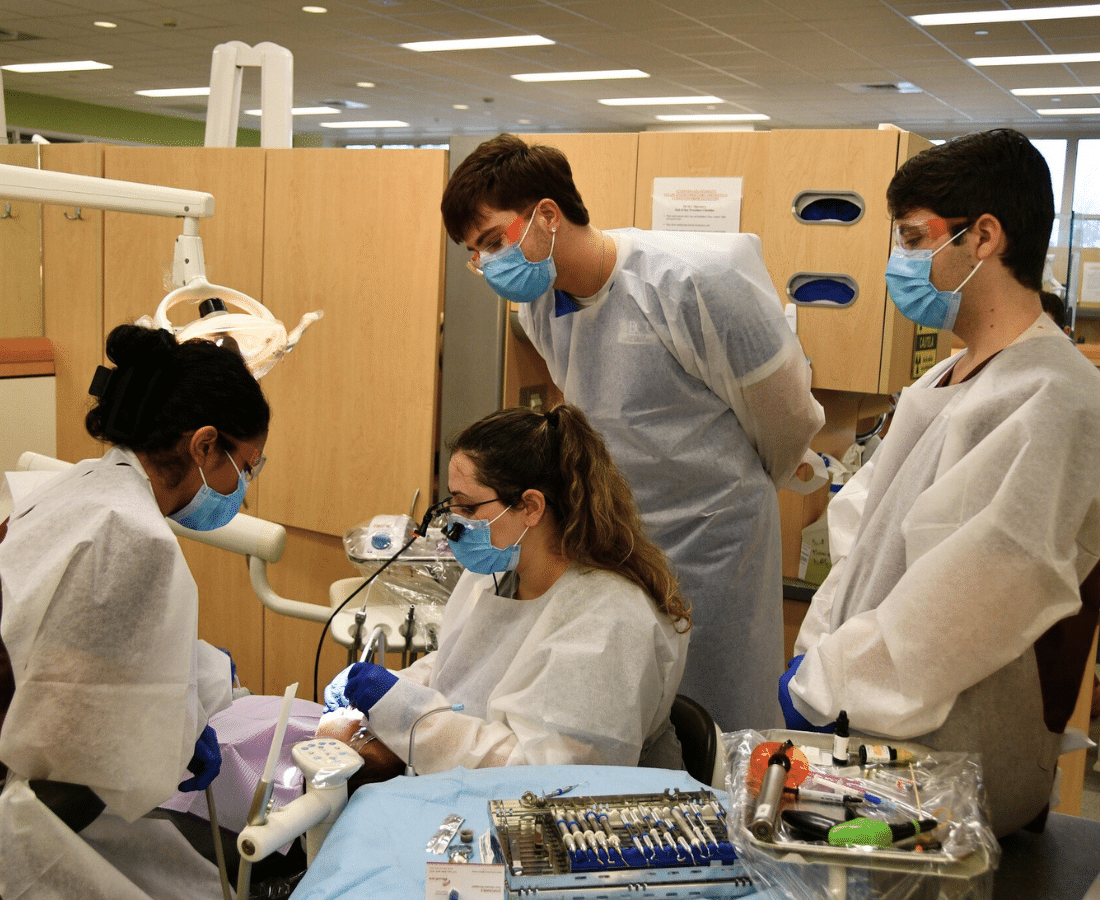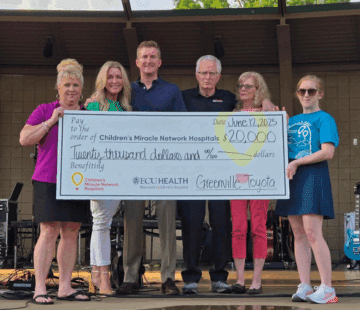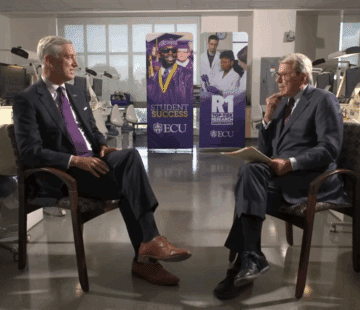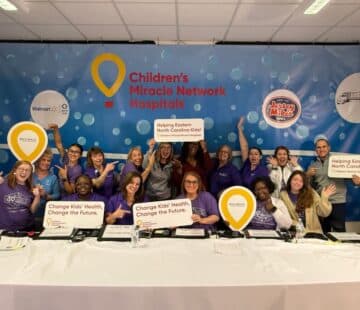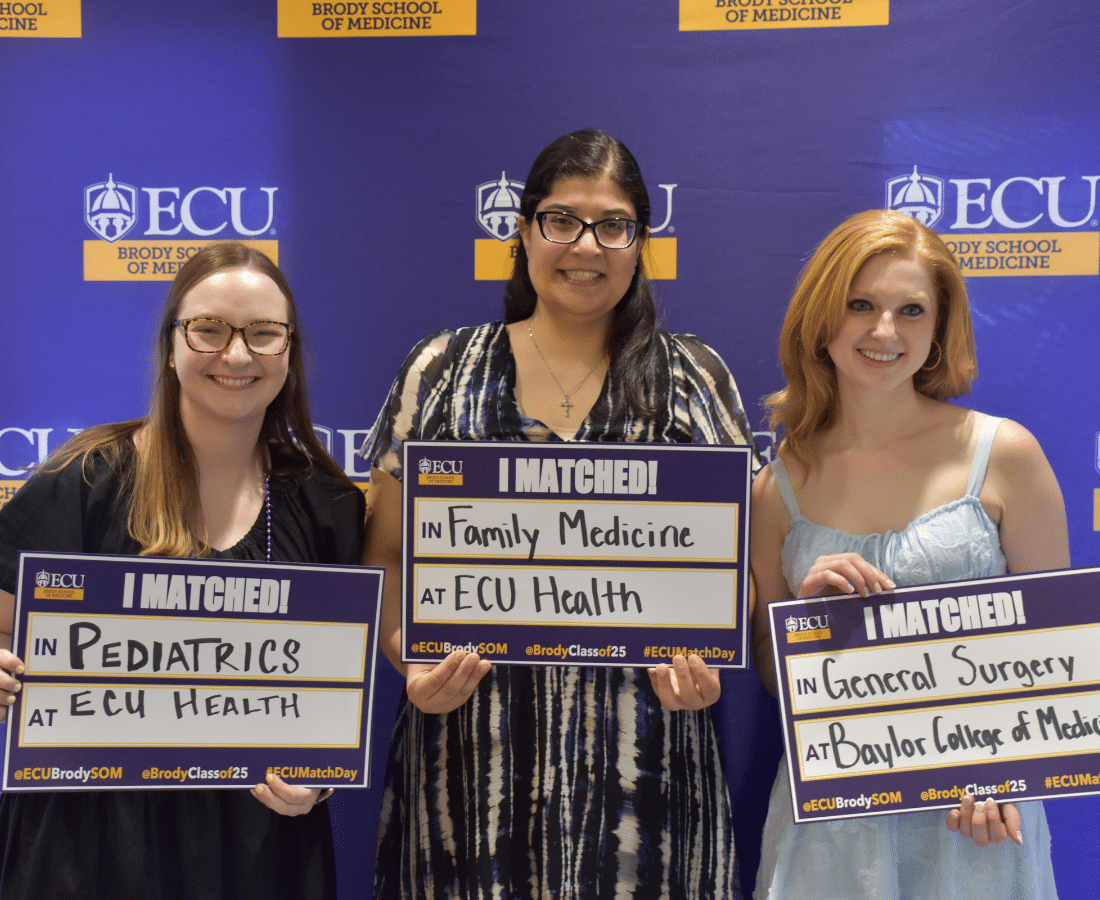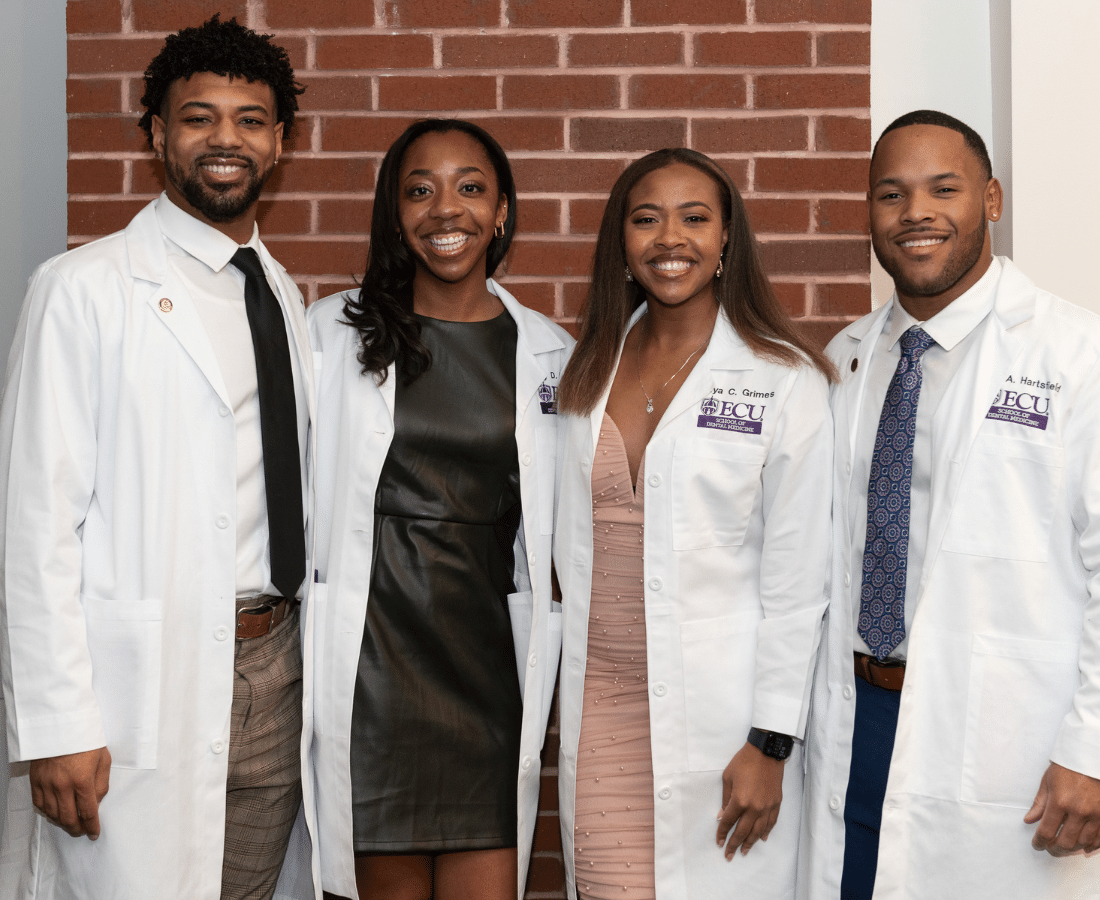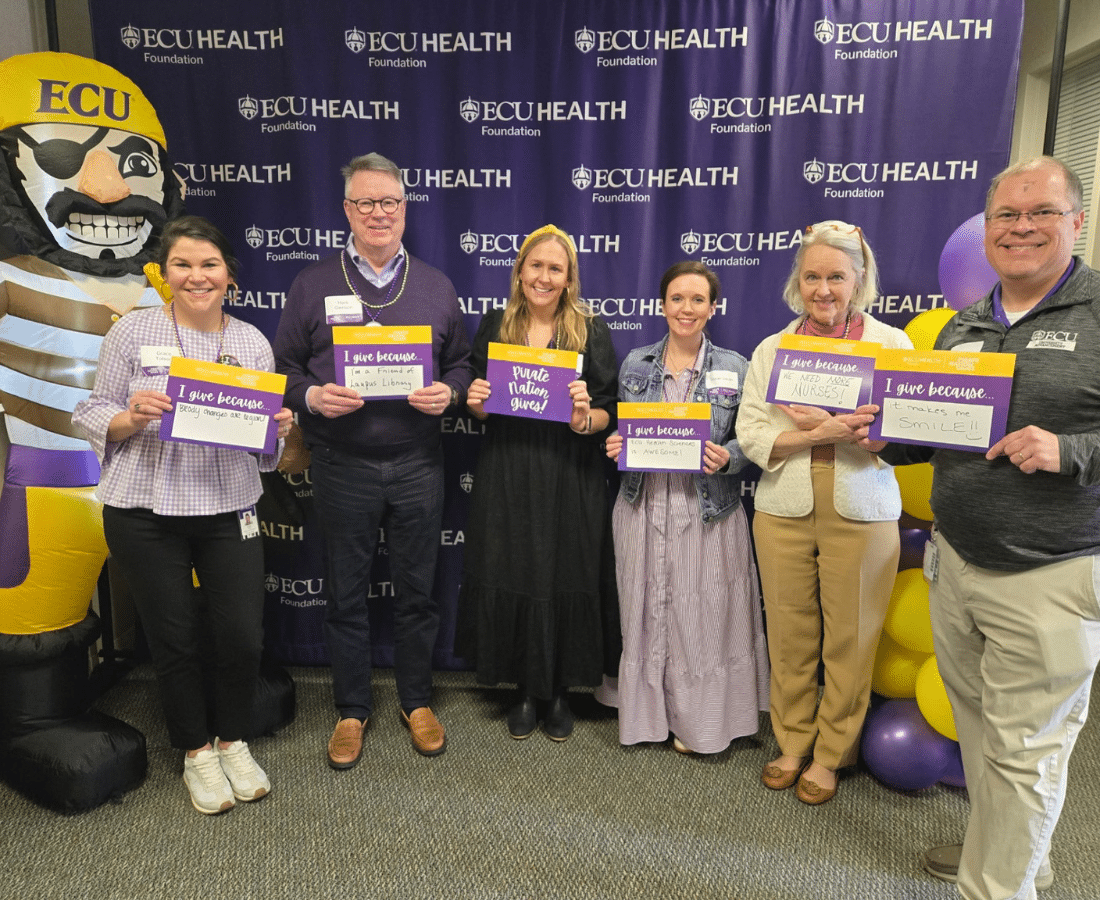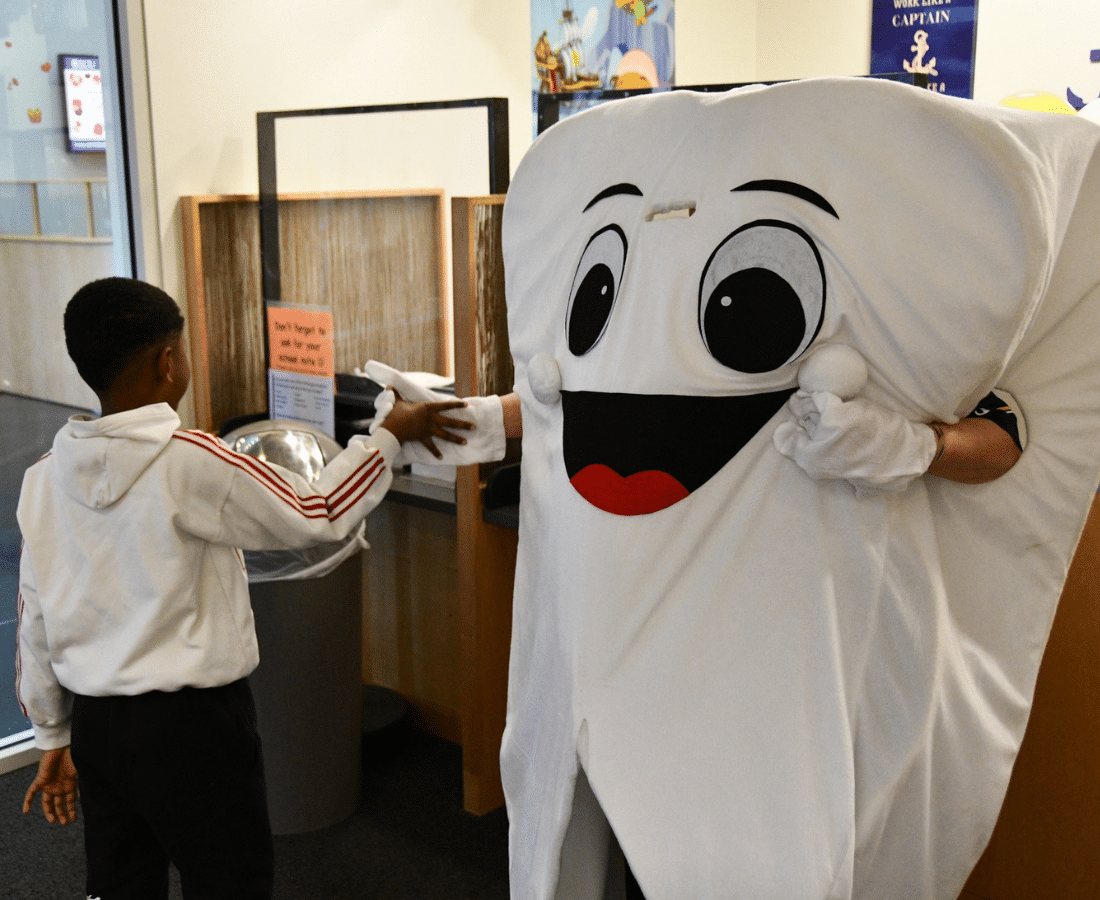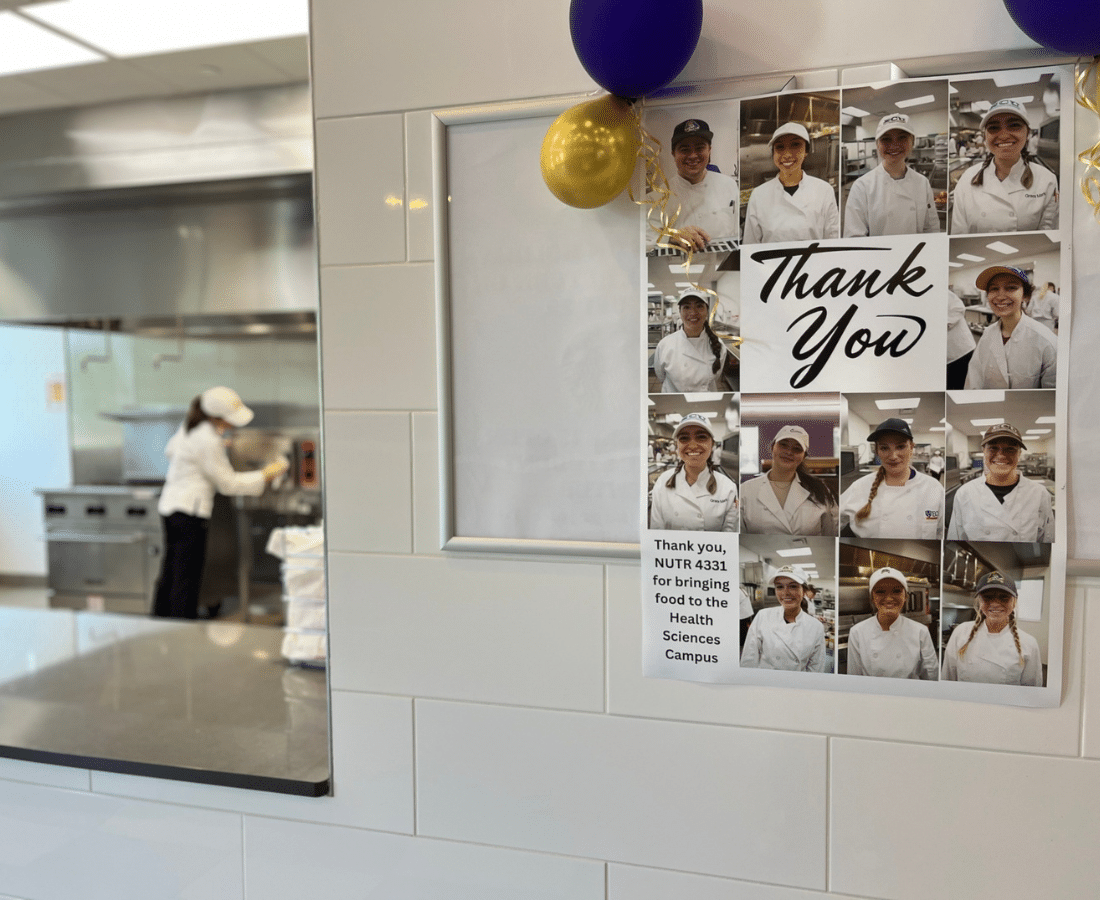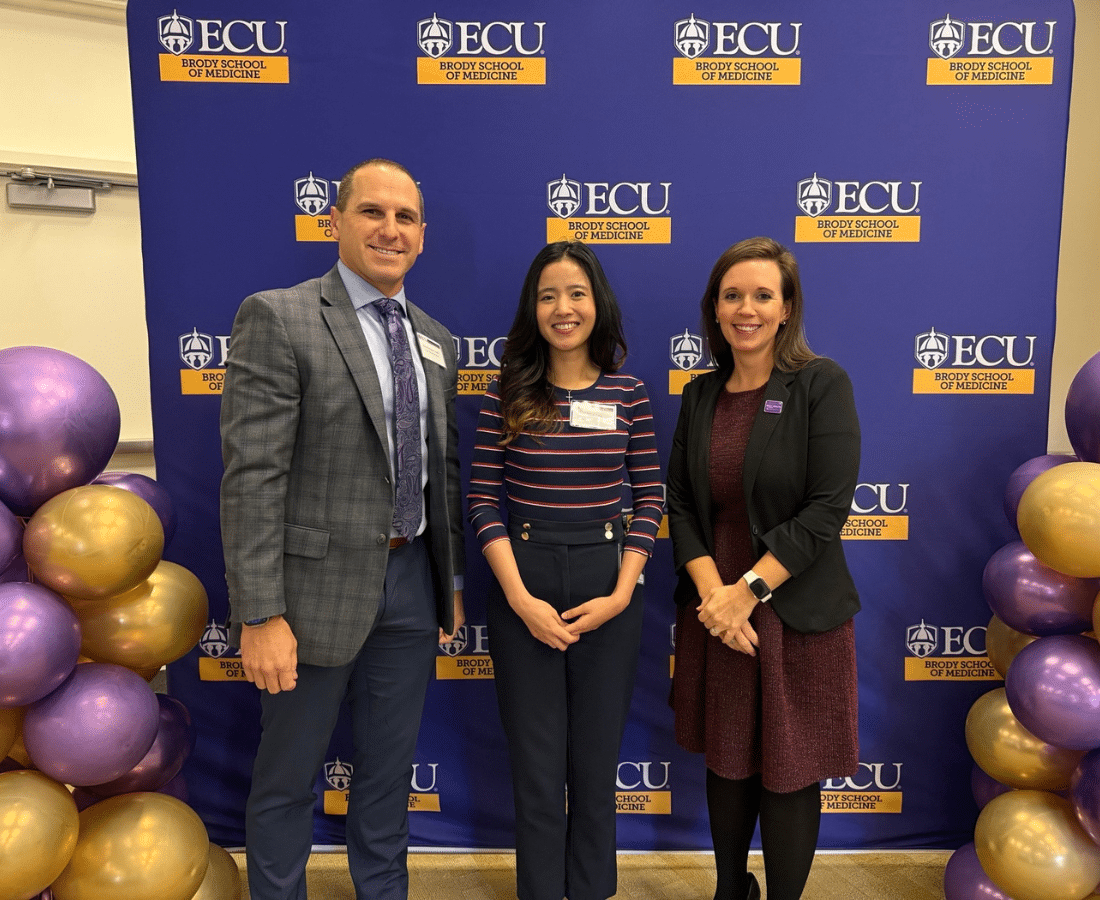East Carolina University’s School of Dental Medicine aims to increase sustainability and provide more patient access in western North Carolina through a grant from Dogwood Health Trust.
The three-year, $593,000 grant invests more than $85,000 in Patient Care Funds and more than $425,000 in salary support for existing and additional positions at the Sylva and Spruce Pine Community Service Learning Centers (CSLC). The grant will ensure that more uninsured individuals receive services and allow the centers to provide competitive salaries in hiring clinical staff and practice management positions.
East Carolina University is now an R1 research institution, a designation given to the top research universities in the U.S. by the American Council on Education (ACE) and Carnegie Foundation for the Advancement of Teaching.
This is the highest level of research excellence, awarded to schools with the most funding, faculty-led research and graduate programs, placing ECU among 5% of institutions in the nation that hold the R1 designation. ECU is one of five institutions in North Carolina and among 187 across the country designated as R1.
On Wednesday, ECU celebrated the recent designation.
At the Brody School of Medicine at East Carolina University, the Class of 2025 celebrated Match Day in style.
Sixty-eight of the 69 students in the class matched. One student elected to do a research year in orthopedics before entering the match program. Fifty-two percent of the class will enter primary care residencies, with 42% staying in North Carolina and 20% matching at ECU Health Medical Center.
The class stood with their families, friends, classmates and faculty members as they tore open their envelopes to reveal the next stop in their medical school journeys. Prior to receiving their envelopes, each student had the opportunity to walk across the stage to a song of his or her choice and a personalized presentation slide shown on a projector screen.
“Match Day is always a special moment in a physician’s journey, and today is no exception,” said Dr. Michael Waldrum, dean of the medical school and CEO of ECU Health. “These students have dedicated themselves to the noble pursuit of caring for others and now have the opportunity to take all they’ve learned here at the Brody School of Medicine to improve the lives of countless patients they will serve in their careers. I could not be more proud of the Class of 2025 on this special day.”
The East Carolina University School of Dental Medicine’s Class of 2027 was honored on Friday, Feb. 28, during the school’s annual White Coat Ceremony — which ushered the students into the clinical phase of their dental education.
The students were joined by family, friends, faculty, staff, fellow students and administrators as they walked across the stage and joined the ranks of those who came before them in the dental profession.
In mid-2022 Dr. Swati Surkar, assistant professor of physical therapy at the College of Allied Health Sciences and the study’s director, began researching the applicability of Hand-Arm Bimanual Intensive Training, or HABIT, in children with unilateral cerebral palsy.
The technique involves inducing ischemia, or the restriction of blood flow, to part of a person’s arm and then having the person perform a series of tasks once the blood flow resumes normally. In past studies, HABIT interventions had proven effective in improving coordination, but little research had been conducted to assess its effectiveness in improving and retaining real-world bimanual activities and hand function.
Over the past two years, Surkar and a team of student volunteers from a wide range of majors and research interests have held HABIT camps for children mostly from North Carolina, but from as far away as Florida, New Hampshire and even Mexico.
During the camps, the children were fitted with watch-like monitors that were worn on both wrists and captured an incredible amount of data about how their hands and arms moved —including range of motion and speed — during the intensive therapy. After the ischemia was induced through a blood pressure cuff, the children would stack cups, throw balls or move through obstacle courses that demanded a lot of effort from both arms.
Her research is showing very promising results.
More than 2,300 alumni, friends and students supported East Carolina University during Pirate Nation Gives on March 5.
Staff and faculty on the health sciences campus added layers of energy and fun to the day beginning with a first-time Pirate Nation Gives kick-off breakfast hosted by the ECU Health Foundation. Challenges were announced to sweeten the idea of supporting funds for allied health sciences, dental, medical and nursing.
Roxanne Wilder, a clinical assistant professor with the College of Allied Heath’s nutrition science department, said the No Quarter Café is a win-win for both her students and the learning community they are a part of.
Wilder’s students are aspiring to be dietitians, to put their education to use in hospitals, long-term care facilities and other food service operations. In recent years, her students have prepared meals in a way-too-small commercial kitchen in the Rivers Building. In 2023 students pre-packaged meals that were sent to the Health Sciences Campus; more recently main campus customers were served in person.
This spring, Wilder and her students moved to the commercial space in the Health Sciences Student Center — with its spacious kitchen that better resembled facilities they may work in after graduation.
Led by its mission to provide assistance to those in need and to help support the community, the Service League of Greenville recently supported the ECU School of Dental Medicine with a $25,000 gift toward patient care funds and the Smiles for Veterans program.
In 2023, the Service League of Greenville established the Laughinghouse Patient Care Fund in the School of Dental Medicine to support dental care needs for Pitt County residents. The recent gift invests an additional $20,000 into the Laughinghouse Fund and directs $5,000 for the upcoming dental care day for veterans scheduled for December 7 at Ross Hall.
“The Service League sees the Patient Care Fund as a way to partner with the School of Dental Medicine to provide assistance to those who are in need of dental services,” said League President Cassie Causey.
The Service League of Greenville is known for its decades of support for health care initiatives and the education of health care providers. In 2018, the organization showed its commitment to health care education through endowed scholarships for students enrolled in the ECU School of Dental Medicine, the College of Allied Health, the College of Nursing, and the Brody School of Medicine.
The Service League of Greenville Scholarship Endowment has funded more than $105,000 in scholarships to students and will continue to provide scholarship support at the Brody School of Medicine, the School of Dental Medicine and the College of Allied Health. In spring 2024, the League created an endowment in the College of Nursing to establish the Service League of Greenville Nursing Scholars. This million-dollar gift will provide full tuition and fees for the academic year in which students receive the award.
During the dental school presentation, League President Cassie Causey and Becki Orr, Laughinghouse Chair, met dental students Riley Girdharry and Peyton Piscorik, recipients of the Service League scholarship.
“Meeting these two dedicated dental students brings to fruition the mission of the Service League and the vision of Dr. Laughinghouse to focus on philanthropy, assisting those in need and improving the health of the residents of Pitt County,” said Orr. “It is gratifying to know that we are providing dental services to patients who are receiving assistance from the Laughinghouse Patient Care Fund.”
Recipient Girdharry said that caring for patients through the Laughinghouse Patient Care Fund will enhance his clinical experiences. “It brings me much joy to know that ECU’s School of Dental Medicine has provided means to support Pitt County residents and other demographics in the area,” he added. “My time to start treating patients is quickly approaching and I couldn’t be more excited to utilize the Patient Care Fund and aid the members of the community. I want to thank the Service League of Greenville for supporting me towards a goal of upholding the School of Dental Medicine’s mission and allowing me to give back to the community that gave me so much.”

